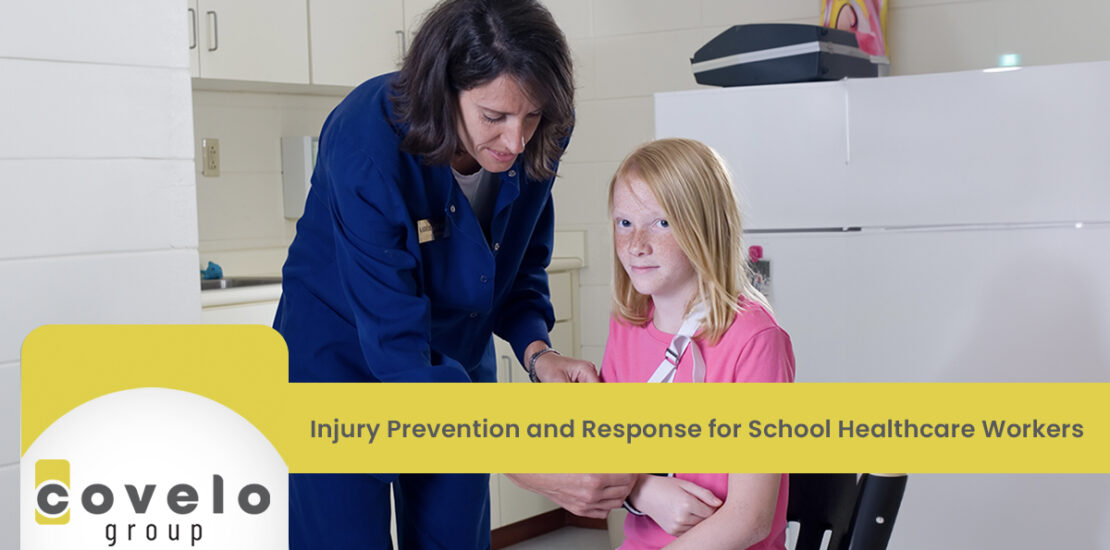- July 24, 2024
- Posted by: Covelo Group
- Category: Educational Services

Injuries at school are frightening to think about – but inevitably, they happen. They can range from minor cuts and scrapes to life-threatening occurrences and mishaps. In fact, the full spectrum of possibilities is mind-boggling. But as long as you’re familiar with school policies and prevention, treatment and response guidelines, all it takes is a calm head on your shoulders to properly manage any situation.
Basic Steps and Supplies
The U.S. Department of Education recommends this comprehensive document as a go-to resource for injury preparedness, prevention, and response. But to zero in on some basics:
- First aid supplies to have on hand should include adhesive tape, band-aids, blankets, a CPR breathing barrier, elastic bandages, eye bandages, gauze squares, ice bags or cold packs, non-latex disposable gloves, paper bags, cups and towels, plastic bags, roller bandage, rubbing alcohol, safety pins, sterile saline solution, scissors, mild liquid soap, splints, a thermometer, triangle bandages, and tweezers.
- Medications should be given only when provided by a parent or guardian and prescribed by a healthcare provider. A signed statement authorizing their use should be kept on site.
- Students should have current emergency care plans in place if they have special healthcare needs, including disabilities, asthma, diabetes, severe allergies, a history of seizures, bleeding disorders, or a need for special medications.
Emergency Response
Of course, every situation is unique. But eight first-aid steps to keep in mind are:
- Survey the scene: Quickly assess what has happened and make sure everyone is safe.
- Do a hands-off check: As you approach affected students, look at their appearance, breathing, and circulation and decide whether or not someone should call 911. This should take less than 30 seconds.
- Handle supervision: Ensure that not only the affected student but also others near the scene are supervised and safe.
- Do a hands-on check: Check the affected student’s condition and determine what first aid is needed.
- Provide first aid: Specifics will depend on the injury or illness. Whatever it takes, remain calm and focused.
- Notify all the right people: Have someone contact the school nurse and, as soon as possible, notify a parent or legal guardian.
- Debrief: If possible, talk to both the affected students and those who witnessed the incident. Then, debrief how you, they, and others responded.
- Document: Complete and submit a written report of what happened.
A few more tips:
- Never move a student who has a head, neck, or back injury or is having trouble breathing.
- Don’t handle emergencies alone. While you give first aid, have someone else take other steps, such as calling 911 and handling notifications.
As you launch or grow your school-based healthcare career, consider partnering with the experts at Covelo Group. We’re a team of industry experts with decades of experience. Let us be your direct line to clinical and non-clinical opportunities at top facilities across the nation. Check out our open roles to learn more.

